Dr. Robert M. Bernstein, a Clinical Professor of Dermatology at Columbia University and one of the leading pioneers in modern hair transplant surgery, is recognized for his leadership in the field of hair restoration with inclusion in his 18th consecutive edition of New York Magazine’s ‘Best Doctors of New York.’

New York, NY — Robert M. Bernstein, MD, MBA, FAAD, FISHRS, has been recognized by his peers with inclusion in his eighteenth consecutive edition of New York Magazine’s annual ‘Best Doctors in New York’ issue. Dr. Bernstein, a Clinical Professor of Dermatology at Columbia University and founder of Bernstein Medical – Center for Hair Restoration, helped re-invent hair transplant surgery by pioneering the Follicular Unit Transplantation (FUT) procedure and by becoming an early proponent of robotic hair transplant surgery (Robotic FUE). He is the only hair restoration surgeon named to the prestigious “Best Doctors” list for so many consecutive years.
Dr. Bernstein said:
“New York has some of the finest doctors in the world, so to be considered among the best by my peers is quite an honor. It is equally satisfying when a patient tells us that we helped change their life.”
The ‘Best Doctors of New York‘ issue is an annual edition of New York Magazine that contains a more select version of the Top Doctors: New York Metro Area list published each year by Castle Connolly Medical, Ltd. New York Magazine’s list of 1,341 doctors represents about the top 2% of doctors in the region. In each list, the area’s top physicians are organized by specialty. Dr. Bernstein is listed under dermatology with expertise in robotic hair transplantation, surgical hair restoration, and hair loss treatment. To be included, doctors in New York, New Jersey, and Connecticut are nominated by their peers then subjected to a physician-led review of their skill in diagnosis and treating patients, qualifications, and reputation. Castle Connolly Medical also publishes the America’s Top Doctors directory, which has included Dr. Bernstein in all sixteen annual editions.
Dr. Bernstein has earned top accolades from the hair restoration industry, including the International Society of Hair Restoration Surgery’s Platinum Follicle Award, for his medical contributions to the field. Renowned for developing FUT hair transplants and introducing follicular unit extraction (FUE) procedures, Dr. Bernstein became one of the first in the world to incorporate the ARTAS Robotic Hair Transplant System into his practice in 2011. He has continued innovating through his collaboration with Restoration Robotics, Inc.; the company that developed the image-guided, physician-assisted robot. Recently, he announced a major upgrade to the robot with the release of ARTAS 9x. This latest version of the robot provides improved accuracy, quicker donor healing, and a faster overall procedure.
Dr. Bernstein’s hair restoration facility, Bernstein Medical – Center for Hair Restoration, is dedicated to the treatment of hair loss in men and women using the most advanced treatments and technologies. The state-of-the-art facility is located in midtown Manhattan, New York City and treats patients who visit from 58 countries and all 50 states. The board-certified physicians and highly-trained clinical assistants at Bernstein Medical take pride in providing the highest level of treatment and care for all patients.
About Robert M. Bernstein, M.D.
Dr. Robert M. Bernstein is a Clinical Professor of Dermatology at Columbia University in New York and is the founder and lead surgeon at Bernstein Medical – Center for Hair Restoration. He was the first to describe Follicular Unit Transplantation and Follicular Unit Extraction in the medical literature, and his more than 70 medical publications have fundamentally transformed the field of hair restoration surgery. Dr. Bernstein has appeared as a hair restoration expert on many notable television programs and in many news and lifestyle publications over the years. Examples include The Oprah Winfrey Show, The Dr. Oz Show, The Today Show, Good Morning America, ABC News, CBS News, GQ Magazine, Men’s Health, Vogue, Interview Magazine, Columbia Business, The Columbia Journalist, The Wall Street Journal, and The New York Times. He is a co-author of Hair Loss & Replacement for Dummies. Dr. Bernstein graduated with honors from Tulane University, received the degree of Doctor of Medicine at the University of Medicine and Dentistry of NJ, and did his training in Dermatology at the Albert Einstein College of Medicine. Dr. Bernstein also holds an M.B.A. from Columbia University.
Posted by

 New York, NY —
New York, NY —  Columbia University Medical Center Education Building; Courtesy of Diller Scofidio + Renfro and Columbia Medical Center
Columbia University Medical Center Education Building; Courtesy of Diller Scofidio + Renfro and Columbia Medical Center Dr. Bernstein is featured in Columbia Business, the alumni magazine of the Columbia Business School, for having “revolutionized the field of hair restoration.” Dr. Bernstein, who received an MBA from the renowned university in 2004, is quoted as having seen an opportunity in 1995 to transform hair transplantation from a procedure using “hair plugs” to one with significantly more natural results. In collaboration with Dr. William Rassman he introduced
Dr. Bernstein is featured in Columbia Business, the alumni magazine of the Columbia Business School, for having “revolutionized the field of hair restoration.” Dr. Bernstein, who received an MBA from the renowned university in 2004, is quoted as having seen an opportunity in 1995 to transform hair transplantation from a procedure using “hair plugs” to one with significantly more natural results. In collaboration with Dr. William Rassman he introduced  New York, NY —
New York, NY — 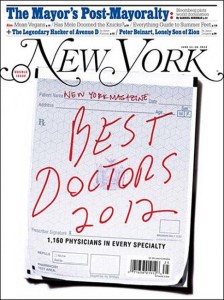 New York, NY — Robert M. Bernstein, M.D., F.A.A.D., the world-renowned hair transplant physician, pioneer of the
New York, NY — Robert M. Bernstein, M.D., F.A.A.D., the world-renowned hair transplant physician, pioneer of the 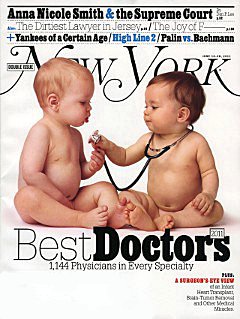
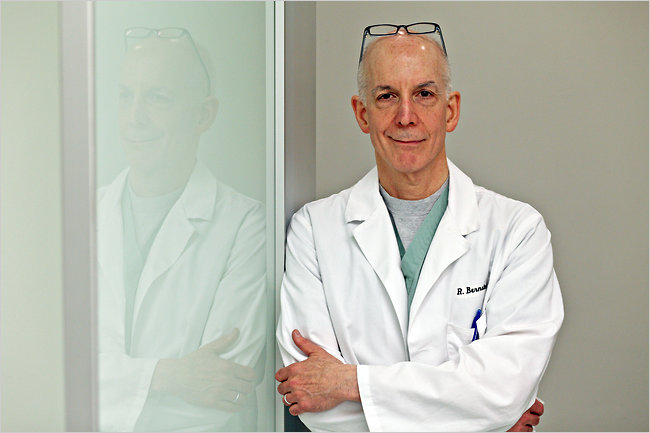
 CBS News has enlisted the help of Dr. Bernstein in dispelling a series of myths which circulate in the general public about the causes and treatments of hair loss. The feature is titled, Hey, Baldy: 10 Things You Need to Know about Hair Loss.
CBS News has enlisted the help of Dr. Bernstein in dispelling a series of myths which circulate in the general public about the causes and treatments of hair loss. The feature is titled, Hey, Baldy: 10 Things You Need to Know about Hair Loss. Dr. Angela Christiano, a colleague of Dr. Bernstein’s at Columbia University, has been studying the causes of alopecia areata and genetic hair loss for many years. She, in fact, suffers from the disease as well.
Dr. Angela Christiano, a colleague of Dr. Bernstein’s at Columbia University, has been studying the causes of alopecia areata and genetic hair loss for many years. She, in fact, suffers from the disease as well. The New York Times interviewed Dr. Bernstein for a full-length article on hair loss and hair transplant options for women interested in hair restoration. The article – titled, “Tricks and Transplants for Women’s Hair Loss” – covered modern hair transplantation techniques, hair transplant costs, camouflage techniques, and more.
The New York Times interviewed Dr. Bernstein for a full-length article on hair loss and hair transplant options for women interested in hair restoration. The article – titled, “Tricks and Transplants for Women’s Hair Loss” – covered modern hair transplantation techniques, hair transplant costs, camouflage techniques, and more.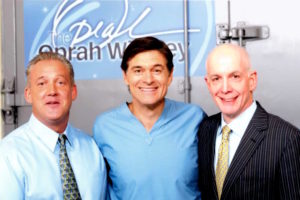
 Columbia University Medical Center has awarded Dr. Bernstein, Clinical Professor of Dermatology, a “Certificate of Appreciation” for sustained contributions to the academic programs of the Department of Dermatology, Columbia University. Please read below for the Bernstein Medical – Center for Hair Restoration press release and a transcript of an interview with Dr. Bernstein on receiving the honor:
Columbia University Medical Center has awarded Dr. Bernstein, Clinical Professor of Dermatology, a “Certificate of Appreciation” for sustained contributions to the academic programs of the Department of Dermatology, Columbia University. Please read below for the Bernstein Medical – Center for Hair Restoration press release and a transcript of an interview with Dr. Bernstein on receiving the honor: The website of Bernstein Medical – Center for Hair Restoration, a state-of-the-art hair transplant facility in Manhattan, was recently recognized by the World Wide Web Health Awards as one of the Internet’s best resources.
The website of Bernstein Medical – Center for Hair Restoration, a state-of-the-art hair transplant facility in Manhattan, was recently recognized by the World Wide Web Health Awards as one of the Internet’s best resources.  Some of the world’s most renown hair transplant surgeons gathered this month to hear about the latest cutting edge methods in surgical hair restoration. Speakers included Robert M. Bernstein. M.D. founder of Bernstein Medical – Center for Hair Restoration, New York, NY
Some of the world’s most renown hair transplant surgeons gathered this month to hear about the latest cutting edge methods in surgical hair restoration. Speakers included Robert M. Bernstein. M.D. founder of Bernstein Medical – Center for Hair Restoration, New York, NY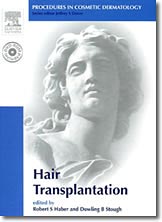 “Hair Transplantation” is one in a series of medical textbooks published by Elsevier Saunders. The textbook — part of a series entitled Procedures in Cosmetic Dermatology — is written by Robert S Haber and Dowling B. Stough and edited by Jeffrey S. Dover. “Hair Transplantation” offers a step-by-step, practical guide to performing cutaneous surgical procedures.
“Hair Transplantation” is one in a series of medical textbooks published by Elsevier Saunders. The textbook — part of a series entitled Procedures in Cosmetic Dermatology — is written by Robert S Haber and Dowling B. Stough and edited by Jeffrey S. Dover. “Hair Transplantation” offers a step-by-step, practical guide to performing cutaneous surgical procedures.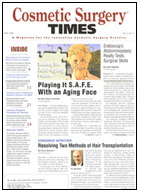 “We felt it was necessary to clearly define follicular unit hair transplantation and mini-micrografting cut to size,” explained Dr. Bernstein, Assistant Clinical Professor of Dermatology, College of Physicians and Surgeons, Columbia University, New York. “
“We felt it was necessary to clearly define follicular unit hair transplantation and mini-micrografting cut to size,” explained Dr. Bernstein, Assistant Clinical Professor of Dermatology, College of Physicians and Surgeons, Columbia University, New York. “


